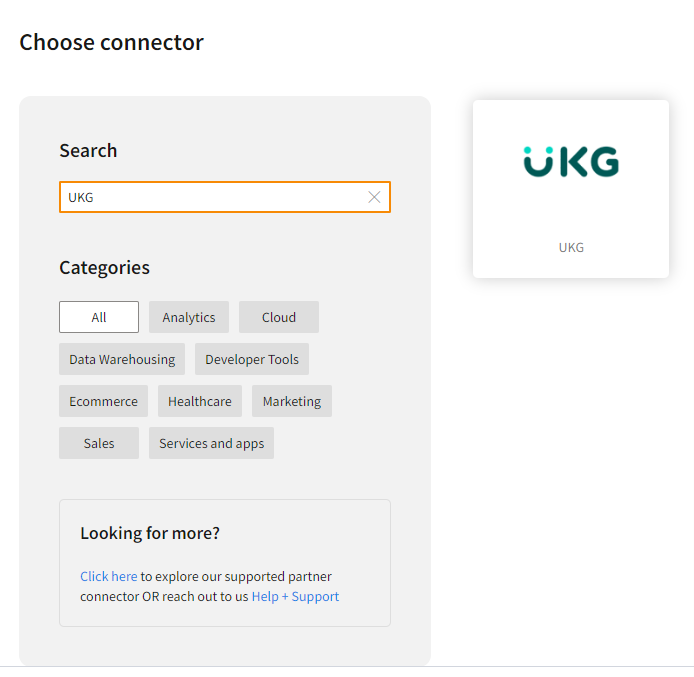Connecting to UKG
UKG offers a workforce optimization platform. This platform helps teams improve compliance, scheduling, HR service delivery, reporting and analytics, time and attendance.
You can connect the UKG to Skypoint AI Studio and perform various tasks such as data ingestion, unification, transformation, and enrichment to gain insights from the data. You can use Skypoint AI's built-in connector for importing data from UKG.
This document will guide you through the process of connecting UKG to the Skypoint AI.
Prerequisite
You need the following details to configure and import data using the UKG⇗ connector:
- Client Id
- Client Secret
- Username
- Password
- App Key
- UKG url
- Default activity start date
To import data using the UKG connector
Follow the below steps to create and configure a new dataflow for the UKG import connector:
- Go to Dataflow > Imports.
- Click New dataflow.
The Set dataflow name page appears.

- Enter the dataflow name in the Name text area.
- Click Next.
The Choose connector page appears.

Add UKG connector
- In the Choose connector page, select UKG connector. You can use the Search feature to find the connector.

- Enter the Display Name for your dataflow in the text area.
- You can add a Description in the text area.
- Click Next.
The Configuration page appears.

Connect to the UKG account
- Enter the required details in configuration page.
- Click Connect.
Once the connection is established, you can use the connector to import data from a table in UKG.

- In the Table details section, click the checkbox for the tables you wish to import, then use the dropdown to mark them as either Data or Metadata.
In the Table Details section, by default, all tables are selected. You can mark only those tables that you want to import and process the data. For example, to import customer data, you can check those tables which contain customer information, such as name, email, address, and contact details.
| Item | Description |
|---|---|
| Purpose | Option to assign a purpose (Data or Metadata) for each table. |
| Data | Loads customer data |
| Metadata | Loads Metadata |
| File name | Displays the name of the file that you imported. |
| Entity name | Displays the imported table name by default. You can rename it if required. |
- Click Save to apply the changes.
After saving the connection, the UKG connector appears on the Dataflow > Imports page.
Run, edit, and delete the imported data
Once the table is imported, you can execute, modify, and remove the imported table from the Dataflow. Follow the below steps:
- Go to the Dataflow > Imports page.

| Item | Description |
|---|---|
| Name | Displays the name of the imported Dataflow. |
| Type | Displays connector type symbol. |
| Status | Indicates whether the data is imported successfully. |
| Tables count | Displays the number of tables imported. |
| Created Date | Displays date of creation. |
| Last refresh type | Displays the refresh value: Full or Incremental. |
| Updated Date | Displays last modified date. |
| Last Refresh | Displays the latest refresh date, which updates each time you refresh the data. |
| Group by | Option to view the items in a specific group. For example, type, status, tables count, etc. |
- Select the horizontal ellipsis under the Actions column and do the following:
| If you want to | Then |
|---|---|
| Modify the Dataflow | Select Edit and modify the Dataflow. Click Save to apply your changes. |
| Execute the Dataflow | Select Run. |
| Bring the data to its previous state | Select Rollback. |
| Delete the Dataflow | Select Remove and then click the Delete button. All tables in the data source get deleted. |
| See the run history of the Dataflow | Select Run history. |
You can see the error message corresponding to failure while importing data from a data source in the Dataflow under Run History Description. Also, you can see the status, start time, and end time for the execution of the data pipeline.
Next step
After completing the data import, start the Master Data Management (MDM) - Resolve process to create a single, unified view of the data. With Skypoint MDM, you can ensure that your data is accurate, consistent, and reliable, making it easier to use for business processes, analytics, and reporting.